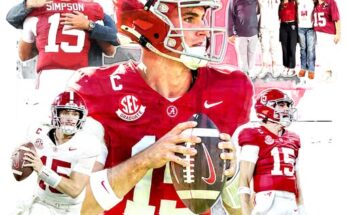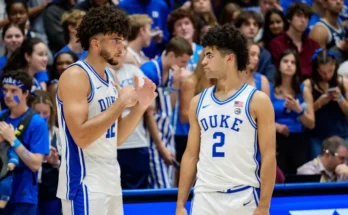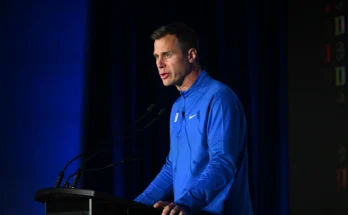Raiders Eyeing Travis Hunter: Assessing the Feasibility of a Trade-Up
The Las Vegas Raiders, holding the sixth overall pick in the 2025 NFL Draft, find themselves at a strategic crossroads. With the recent acquisition of quarterback Geno Smith, the team has the flexibility to pursue other areas of need, notably at cornerback and wide receiver. One prospect that has garnered significant attention is Travis Hunter, a dynamic two-way player known for his exceptional skills on both sides of the ball. This article explores the possibility of the Raiders trading up to secure Hunter, evaluating the potential benefits, challenges, and the broader draft context surrounding this scenario.
Travis Hunter: A Dual-Threat Prospect
Travis Hunter’s unique ability to excel as both a wide receiver and cornerback has captivated the attention of NFL scouts and analysts alike. His versatility offers a rare blend of offensive and defensive prowess, making him a valuable asset to any team. Hunter’s collegiate performance has solidified his status as one of the top prospects in the upcoming draft, with projections placing him within the top five selections.
Raiders’ Current Position and Needs
The Raiders’ current roster and recent moves provide insight into their draft strategy. With Geno Smith now under contract, the immediate need for a quarterback has diminished, allowing the team to focus on other positions. Analysts suggest that the Raiders should consider selecting the best available player to maximize their draft capital. Potential areas of focus include cornerback, wide receiver, running back, and offensive line, with cornerback and wide receiver being particularly pertinent given Hunter’s skill set.
Trade Scenarios: Moving Up for Hunter
Several trade scenarios have been proposed regarding the Raiders’ potential move up the draft board to secure Travis Hunter. One such proposal suggests that the Raiders could offer their sixth overall pick, along with additional assets such as tight end Michael Mayer and future draft picks, to the Cleveland Browns in exchange for the second overall pick. This move would position the Raiders to select Hunter, addressing their needs at both cornerback and wide receiver.
Evaluating the Trade Proposal
The feasibility of the proposed trade hinges on several factors:
- Asset Valuation: The Raiders would need to assess whether the combination of their sixth pick, Michael Mayer, and future picks offers sufficient value to entice the Browns to move down four spots.
- Team Needs Alignment: The Browns’ assessment of their roster and draft needs will influence their willingness to engage in such a trade.
- Hunter’s Availability: Given Hunter’s projected high selection, the Raiders must consider whether trading up guarantees his availability, or if other teams might also be pursuing him.
Alternative Strategies
If the Raiders determine that trading up is not viable, alternative strategies include:
- Staying at Six: Selecting the best available player at their current position, potentially addressing needs at cornerback or wide receiver.
- Trading Down: Moving back in the draft to accumulate additional picks, thereby enhancing depth across multiple positions.
Market Dynamics and Other Team Interests
The draft landscape is further complicated by the interests of other teams. For instance, the New York Jets, holding the seventh overall pick, are also in the market for a quarterback, which could influence the availability of other prospects. Additionally, the Tennessee Titans, with the first overall pick, have their own quarterback considerations, potentially impacting the draft’s top selections.
The prospect of the Raiders trading up to select Travis Hunter encapsulates the dynamic and strategic nature of NFL draft preparations. While the potential benefits of acquiring a versatile talent like Hunter are evident, the challenges associated with such a move require careful consideration. Ultimately, the Raiders’ decision will reflect a balance between immediate roster needs, long-term team strategy, and the evolving dynamics of the draft landscape.



